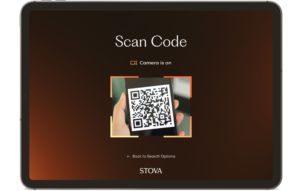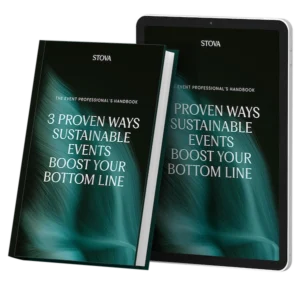8 Strategies for Mastering Lead Retrieval at Trade Shows
August 22, 2024
Lead retrieval is arguably the most important objective for sponsors and exhibitors at a trade show, but the technology supporting this activity today is often clunky and ineffective. How can you ensure that the tools you’re using are fit for purpose and won’t frustrate sponsors, exhibitors, and the attendees they’re there to meet?
Here are 8 common pitfalls to avoid and the solutions that will ensure a seamless lead capture experience for exhibitors and attendees alike.
1. Too Many Tools to Manage!
Managing multiple tools for lead retrieval can be frustrating and inefficient for exhibitors. When exhibitors are bogged down by juggling various devices and platforms, it detracts from their ability to engage meaningfully with potential leads, ultimately hurting the overall lead generation process. For example, an exhibitor juggling a badge scanner and a separate app for note-taking might miss crucial information, impacting their follow-up strategy.
How do you fix it?
Lead retrieval should be nested right in the event app.
Integrating lead retrieval within the event app simplifies the process. In addition to allowing booth staff to focus on their conversations with potential customers, using an event app that integrates with the rest of the event’s digital layer gives exhibitors a richer baseline using data from in other areas like registration.
2. Low Engagement
Low engagement from attendees is a significant barrier to effective lead retrieval. If attendees find exhibitor booths uninteresting, they are likely to pass by without engaging. This not only reduces the number of leads collected but also impacts the quality of those leads because attendees who are not actively engaged are less likely to provide valuable qualifying information.
How do you fix it?
Gamifying sponsor and exhibitor engagement encourages attendees to interact.
Incorporating gamification elements can boost engagement and enhance lead capture. Features like scavenger hunts, leaderboards, and rewards for interacting with exhibitors incentivizes these key interactions by motivating attendees with social or material rewards.
3. Missed Opportunity for Visibility
Organizers often miss out on valuable real-time data related to attendee interactions with exhibitors. This data might help them develop strategies to maximize engagement. For example, if the data reveals low foot traffic in an area of the trade show floor, an organizer might motivate attendees to head in that direction with a charging station or activation. This information can be valuable to exhibitors as well, as it might better enable them to capitalize on peak engagement times.
How do you fix it?
Lead capture solutions should generate insights using real-time footfall, traffic, and engagement data.
Integrating lead capture data into overall event analytics provides a more complete picture of exhibitor engagement, enabling both event organizers and exhibitors to adjust their strategies on the fly, optimizing their approach to attract more leads.
4. Cumbersome Lead Capture
Cumbersome lead capture processes can frustrate both exhibitors and attendees. Manual data entry or even more outdated methods like business cards can slow down the process and increase the likelihood of errors. An exhibitor relying on paper forms might struggle with legibility issues, misplace forms, or experience delays in transferring data to their CRM. These inefficiencies can lead to lost leads and reduced overall effectiveness. Cumbersome processes can also deter attendees from maintaining their engagement as they can get in the way of a natural, comfortable conversation.
How do you fix it?
QR codes and RFID-based lead capture expedites the collection of data, reduces errors, and allows exhibitors to capture leads on the go.

QR-codes pack essential attendee information and consent to contact into one simple scan (or tap in the case of RFID badges if you don’t mind a bit of extra hardware). Moreover, as a fast and easy process on the go that doesn’t require carrying forms or clip boards, exhibitor staff are not tied to their booths and can capture leads serendipitously throughout the event.
Attendees also appreciate being able to quickly scan a code or tap an RFID badge to share their information, rather than having to fill something out or answer the same series of questions at every booth.
5. Poor Lead Data
Collecting insufficient or irrelevant lead data can hinder the follow-up process. This is because poor lead data impedes the ability to prioritize leads effectively, resulting in time wasted pursuing leads that are not ready to buy or who do not have purchasing power. Insufficient data also makes it more difficult to tailor follow-up communications, reducing the efficiency of post-event sales efforts.
How do you fix it?
Qualify leads not only by lead heat but also buying timelines, budgets, decision-making authority, and any other information you consider for your ideal customer persona (ICP).
Knowing a lead’s budget and purchase timeline allows exhibitors to time correspondence according to when a lead might be the most receptive, and other qualifying information like the lead’s challenges and preferences allow exhibitors to offer relevant solutions and close deals faster. A lead capture solution should facilitate collecting and storing this data in a way that makes leads easy to filter, segment and follow up with.
6. Clumsy Lead Qualification Processes
Exhibitors need a way to quickly identify and prioritize high-quality leads. Without a system to mark promising leads, exhibitors under pressure to follow up while the lead is hot may end up neglecting those with a higher likelihood of conversion. This results in lost sales opportunities, as exhibitors struggle to distinguish between leads that require immediate attention and those that do not.
How do you fix it?
A lead retrieval solution should categorize leads so exhibitors can prioritize them based on lead quality in real-time.
A lead retrieval app with features for favoriting and prioritizing leads helps exhibitors manage their prospects more effectively. Using Stova, exhibitors can score leads based on a range of factors, ensuring they focus their efforts where it matters most in the immediate follow up. This real-time qualification process streamlines lead management and maximizes conversion potential.
7. Lax Data Security
Data security is a major concern when handling sensitive lead information. Lax security measures can lead to data breaches. These can damage the trust between organizers, exhibitors and attendees, and in the worst case scenario, they can have severe consequences including legal liabilities, fines, and loss of business.
How do you fix it?
Exhibitors must ensure that their lead retrieval methods comply with the highest security standards to protect attendee information and maintain trust.
Lead capture technology should use cloud-based lead data storage that complies with the highest industry security standards. Cloud storage offers encryption, access controls, and compliance with industry standards like GDPR. This approach safeguards sensitive information and maintains trust between exhibitors and attendees.
8. Data Doesn’t Integrate, Bottlenecks Follow-Ups
Non-integrated lead data can create bottlenecks in the follow-up process. Manually transferring data between lead capture applications and CRM tools is time consuming. This delay reduces the chances of converting leads into customers as timely follow-ups are crucial for maintaining interest and engagement and other competing exhibitors may be closing deals while an exhibitor is still following up.
But more importantly, it’s prone to errors. For example, if more than two booth staffers from the same exhibitor have interacted with a given lead, they may neglect to reconcile their records and inadvertently create duplicate records in the CRM. These will need to be sorted out before following up to prevent a given lead from being inundated with multiple communications from the same sales team.
How do you fix it?
Exhibitors need seamless data integration to ensure that lead information flows smoothly from capture to follow-up, enabling prompt and effective sales efforts.
Integrating lead retrieval with CRM tools automates data transfer, ensuring a both speedy and accurate lead data that is immediately available in the CRM for following up. Stova’s lead capture tool integrates with common CRM systems like Salesforce and Hubspot, ensuring that exhibitors can contact leads while they are still warm and increasing the likelihood of converting leads into customers.
Conclusion
Ensuring effective lead retrieval is crucial for sponsors and exhibitors at trade shows, yet the technology often falls short. Understanding and avoiding common pitfalls will ensure that the lead retrieval solution at your event supports your exhibitors’ performance. By consolidating the tools exhibitors have to use and boosting their efforts with event games and CRM integrations, you can empower exhibitors to achieve more engagement with a higher volume of better-qualified leads.
To learn more about optimizing your event’s lead capture capabilities and keeping exhibitors happy, contact Stova today.
Whether your event is virtual, hybrid, or in-person, enhance your attendee’s journey with an event ecosystem built for your audience. Ready to walk through Stova's event technology solutions? Schedule some time with us today.


